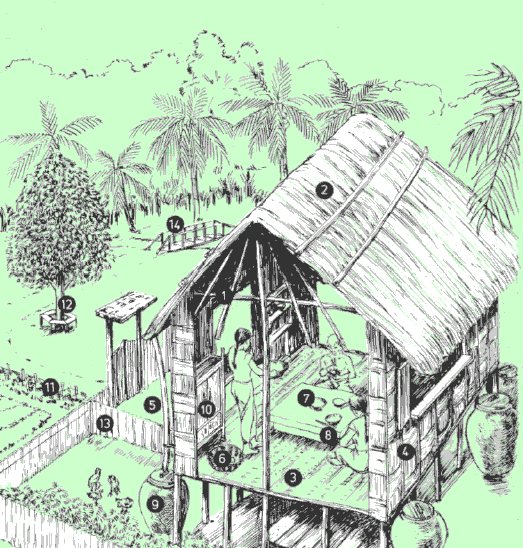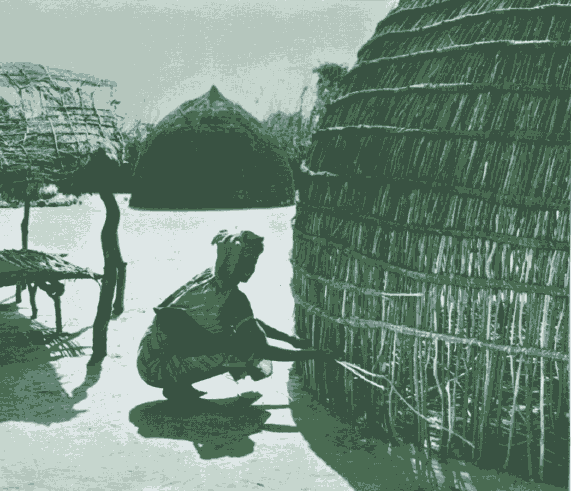



tree products used in the household:
building materials
1. house frames 2. roofing 3. flooring 4. walls 5. water pipes
household items
6. baskets 7. plates 8. eating implements 9. water containers 10. furniture
garden
11. windbreaks 12. shade trees 13. fencing 14. bridges
Women rely on the presence of trees to maintain many parts of their households. While men are usually- though not always- responsible for house construction, it is nearly always the woman's job to carry out minor repairs. Trees provide nearly all that is needed: poles for buildings and sheds, leaves for thatch, canes and stems for wattle, and fibres for twine.
Many of the items that women use in and around the house- spoons, brushes, bowls, mortars and pestles- are made from nearby trees that may be raised specially for that purpose. Fencing within the homestead, vital to protect gardens if small domestic stock are kept, is made either from brushwood or planted as a living fence which may also be productive in its own right. Gathering, building and repairing fencing around household compounds is often women's responsibility and is another major use of wood.
Of the many other products provided by trees, dyes and medicines are particularly important. The bark of many different trees provides a range of colours for dyeing clothes, though often only after prolonged boiling to extract and concentrate the natural pigments. And in many remote areas, medicines extracted from trees and forest plants are still the only form of treatment readily available. In India, for example, the tendu tree (Diospyros melanoxylon) has an astringent bark used to treat diarrhoea and dyspepsia. Its dried flowers are also claimed effective for the treatment of several urinary, blood and skin diseases.

hut construction in north Senegal- a Peul woman makes use of one of the few natural materials available to her
Trees provide many hundreds of medicines widely used for the treatment of disease. In nearly all traditional societies, medicine is practised by women. It is often considered a domestic craft, knowledge of which is handed down from mother to daughter.
Another household use of trees- one that merits special mention- is shade. The importance of shade has been trivialized or ignored in many accounts of the roles of trees. In fact, the shade that trees provide round the homestead allows households to work and live under conditions that would otherwise prove intolerable. Trees in fields give shade to small children while mothers transplant or weed. Because of this, and for aesthetic reasons, women regularly plant trees around their houses and compounds, and in the fields in which they work.